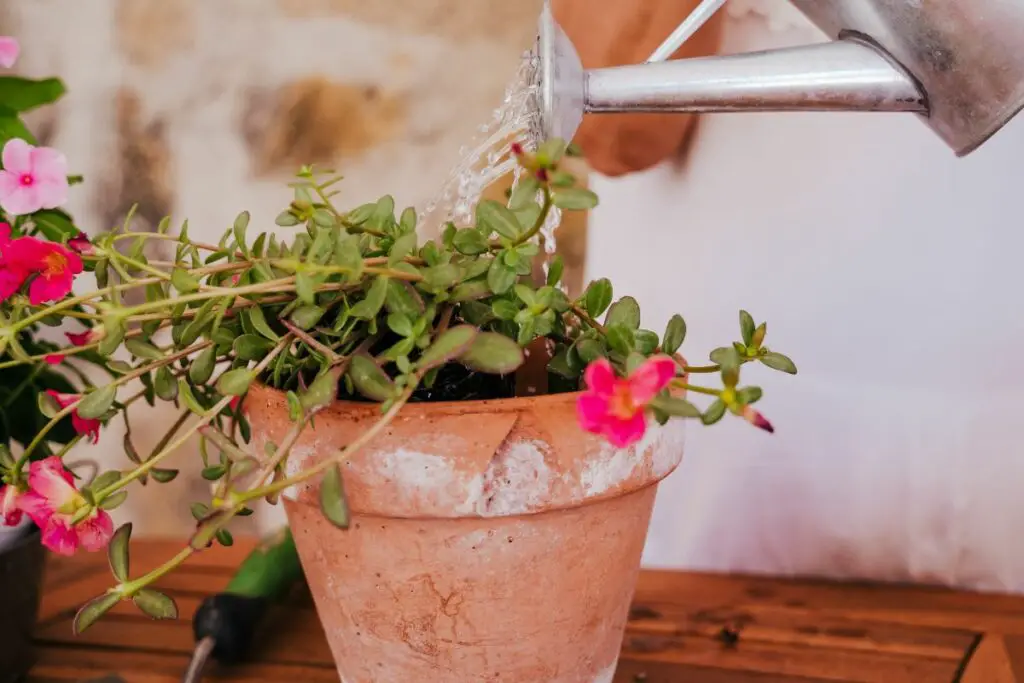As the days get longer and the temperatures start to rise, it’s time to say goodbye to winter and hello to outdoor planting!
If you’re wondering when is the right time for your plants to enjoy some fresh air, then this blog article is just what you need.
We’ll give you tips on how best to reintroduce your plants back outside so they can thrive in natural environments.

So don’t wait any longer – let’s dive into finding out when it’s safe for your greenery friends to take a break from their indoor homes!
Table of Contents
When Is the Right Time to Let Your Plants Enjoy the Outdoors?
It’s finally that time of year when you can start to think about bringing your plants back outside. But, when is the right time?
The good news is that there are a few key signs to look out for which will tell you it’s safe to move your plants outdoors again.
The most important thing is temperature – make sure the temperature has been consistently above 10°C (50°F) during the day and night for at least a week before taking any action.
This should give them enough time to adjust and acclimatize without suffering from shock or damage due to sudden changes in the environment.
Another factor you need to consider is rainfall – if it’s been raining heavily, wait until things dry up before moving your plants outside as this could cause root rot or other issues with their health.
If possible, try and pick a day where there isn’t much wind either so they don’t get blown around too much!
Finally, take some extra precautions by gradually introducing them back into outdoor conditions over several days rather than just leaving them out all at once; this way they won’t be overwhelmed by drastic changes in light levels or humidity levels etc., which could potentially harm their wellbeing in the long run.
Overall, while it may seem like an exciting moment when you can finally bring your beloved houseplants back outside after months of being cooped up indoors – patience really does pay off here!
Taking these simple steps will ensure that both yourself and your plants enjoy many happy hours basking in the sunshine together!
Springtime: The Perfect Season for Reintroducing Plants Outside
Springtime is the perfect season for reintroducing plants back outside! After a long winter of being cooped up indoors, your plants are likely eager to get some fresh air and sunshine.
As temperatures begin to rise and days become longer, it’s time to start thinking about transitioning your houseplants outdoors.
When deciding when exactly you should move your plants outside, there are a few things you should consider.
First off, make sure that the temperature has been consistently above 50 degrees Fahrenheit during the day for at least two weeks before bringing them out.
It’s also important to check that nighttime temperatures have stayed above 40 degrees Fahrenheit as well so that they don’t experience any shock from drastic temperature changes between night and day.
Once these conditions have been met, it’s time to slowly introduce them back into their outdoor environment by placing them in an area with indirect sunlight first then gradually increasing exposure over several days or weeks until they reach full sun levels if needed (depending on what type of plant).
You’ll also want to water more frequently than usual since increased light will cause evaporation faster than normal indoor lighting would do so be sure not to take too long between watering sessions!
Finally, keep an eye out for signs of stress such as wilting leaves or discoloration which could indicate either too much or too little sunlight/watering – both can be easily adjusted with proper care but it’s always best practice just in case something goes wrong!
With all this taken into consideration though springtime is definitely the perfect season for reintroducing plants back outside after a long winter indoors – happy gardening everyone!
Help Your Greenery Thrive in Natural Environments
As the days get longer and warmer, it’s time to start thinking about bringing your plants back outside.
But before you do, there are a few things you should consider to make sure that your greenery thrives in its natural environment.
First of all, check the temperature. Plants need warm temperatures to grow and thrive – too cold or too hot can cause damage or even death!
Make sure that the area where you plan on placing your plants is not exposed to extreme temperatures during any part of the day.
If possible, try to find an area with some shade during peak hours so that they don’t get overheated by direct sunlight.
Next up is soil quality – this is one of the most important factors when it comes to keeping your plants healthy outdoors!
The soil needs good drainage so water doesn’t stay around for too long; otherwise, root rot can occur which will kill off any plant life in no time at all!
Also, be aware of what type of fertilizer you use as some fertilizers may contain chemicals that could harm delicate roots if used excessively or incorrectly mixed with other substances like compost or manure.
Finally, keep an eye out for pests such as aphids and caterpillars which can wreak havoc on outdoor gardens if left unchecked!
Try using organic pest control methods such as neem oil sprays instead of chemical pesticides whenever possible – these are much safer for both humans and animals alike but still effective against pesky insects like aphids and caterpillars without harming beneficial bugs like ladybugs who help keep them under control naturally!
By following these simple steps, you’ll be able to ensure that your greenery thrives in its natural environment while also protecting yourself from potential hazards associated with gardening outdoors – happy planting everyone!
Conclusion
In conclusion, the timing for bringing plants back outside varies depending on the type of plant and the climate in which they are located.
It is important to consider factors such as temperature, humidity, and weather conditions before introducing plants to the outdoors.
It is also important to gradually acclimate plants to the outdoor environment by starting with partial shade and increasing sunlight exposure over time.
With proper planning and care, you can successfully bring your plants back outside and enjoy their beauty in your outdoor spaces.
- How to Build a Planter Box for Bamboo: A Step-by-Step Guide

- Can Robotic Lawnmowers Handle Steep Slopes?

- Do You Need a Specific Lawn for a Robotic Lawnmower? Expert Advice

- Are Robotic Lawnmowers Safe for Pets and Children? Safety Features of Robotic Lawnmowers

- Why Use Robotic Lawnmowers? Advantages of Using a Robotic Lawnmower

- Is the GARDENA SILENO City 300 Cordless or Corded? A Clear Answer














